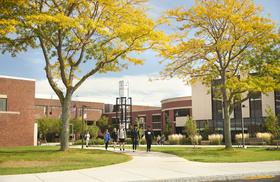Connecticut College System to Undergo Major Overhaul in Merger
To save money and streamline the higher education process, Connecticut has merged the state’s college system to create a central governance board for 12 community colleges, four universities, and Charter Oak State College – an online college. The only state school that will remain independent under the new structure is the University of Connecticut. While many applaud this change as an effective way to improve the state’s college system overall, others are concerned about exactly how this new merger will impact individual schools with very different missions.
How the Merger Happened and What Students Can Expect
According to a report at Inside Higher Ed, Connecticut state legislators launched the merger in July, when they created the new Board of Regents for Higher Education to oversee the institutions in the state. Two of the primary reasons for the decision were to save money on higher education overall, as well as to coordinate higher education in the state to ensure students received an education that would prepare them for a lucrative and available job in the future.
“The State of Connecticut has to look across higher education,” Gena Glickman, president of Manchester Community College, told Inside Higher Ed. Glickman added that the state needs to determine “whether or not we’re facile enough to meet the needs of each student.”
The new Board of Regents will consist of 19 board members who have not yet been appointed, according to a report at CBS Connecticut. Nine of the positions will be appointed by the governor. Changes are scheduled to be announced at a meeting on December 20, according to Inside Higher Ed.
In the meantime, the transition team consists of the old boards and will remain in effect through the end of the year. At this point, old boards continue to hold meetings and conduct business as usual. Still, the new board will have the authority to overturn any decisions made during this time if they do not fit with the latest reorganization plan later on. However, the hope is that changes of this nature will be kept to a minimum if they occur at all.
“Our goal is to be able to work out this transition period in a way that there’s no reason to have the Board of Regents overturn anything,” Michael Meotti, the interim president for the new Board of Regents, told CBS Connecticut. Meotti added that while students and staff of the schools may eventually feel a pinch when colleges try to absorb significant budget cuts, the management consolidation should not bring any short-term changes.
Potential Benefits of the Merger
One of the biggest reasons the merger was pushed through state legislation is its ability to save millions of dollars in higher education in the long run. According to a report at Education Portal, that savings could total as much as $30 million over 6 years. Savings would primarily come through eliminating presidents and payroll departments at some of the smaller institutions included in the merger. At a time when budget constraints are forcing schools and state governments to tighten their belts, any potential savings is welcome news.
Another potential advantage is that coordinating the governance of these schools could result in a more efficient higher education system overall. The merger could ensure schools in the state respond more effectively to business and academic trends by moving to provide degree programs in fields most in demand at any given time.
Glickman agrees that the new structure may be a boon to universities and community colleges alike. By joining forces, Glickman predicts that students could enjoy better transfer options, and smaller community colleges may have better luck getting their voices heard.
“Students will have more opportunities,” Glickman told Inside Higher Ed. “I think it will help.”
Controversy Brewing
Despite the widespread support the merger has seen from many in government and education, not everyone is on board with the plan. Community college officials, in particular, worry that the merger may take choices away from their schools and even force the closure of some campuses. While closing campuses is not a decision on the table currently, a single board of regents could increase that possibility in the future.
“I am opposed to the consolidation and merger idea,” Mary Kirk, president of Montgomery Community College, said at Education Portal. Kirk voiced concern over rural students who might not have the same access to affordable education and training after the merger.
Connecticut Governor Dannel P. Malloy, who helped state legislators pass the bill, is not surprised by the opposition to the plan. Malloy told CBS Connecticut, “There will always be change, and since campuses prepare people for the future and careers in a changing world, campuses will become places of lots of change.”
Connecticut is not the first state to try this model for its schools. According to a report in the CT Mirror, Alaska, Minnesota, Maryland, Massachusetts, and North Dakota have all taken similar steps. At this point, North Dakota’s merger model is the only one that has shown success. However, Terry MacTaggart, author of a book that analyzed all five mergers, said that Connecticut’s efforts show great potential thus far. He described the Regents involved in the transition as “a seasoned board [with] business success, success in the public sector, success in politics…”
“There is a kind of readiness for change,” MacTaggart stated in the CT Mirror. “I genuinely believe you guys can pull this off.”
Questions? Contact us on Facebook and Instagram. @communitycollegereview
#ConnecticutColleges #HigherEdMerger #EducationReform #CollegeRestructuring #SystemOverhaul #communitycollege














